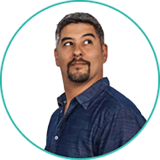Summary
Did you know that the SUS creates biases in your research, affecting one in five people? That’s right! People with disabilities, especially those who use assistive technology, are not considered by most of the questions in the SUS. As a designer for the public sector, this could lead to you making design decisions that don’t take into account 20 percent of the visitors to your website.
Key Insights
-
•
Screen readers allow users to navigate web pages quickly by jumping through well-structured headings and content.
-
•
Low vision users often rely on system-wide screen magnification and color inversion settings to reduce eye strain.
-
•
Alternative navigation methods like head mice and voice dictation are selected based on task and user condition, not used exclusively.
-
•
Traditional lab-based usability research often prioritizes convenience over real assistive technology configurations, leading to inaccurate results.
-
•
Assistive technology users rarely use default settings; they extensively customize tools over time for optimal use.
-
•
The System Usability Scale (SUS) includes questions that confuse assistive technology users and do not capture their true experience.
-
•
Fable’s Accessible Usability Scale adapts SUS questions to better reflect the experience of assistive technology users.
-
•
Initial data shows screen reader users report significantly lower usability scores (mid-50s) compared to screen magnification users (low 60s).
-
•
Users’ lowered expectations after years of experience may mask the true severity of usability issues in assistive technology contexts.
-
•
Measuring accessibility usability accurately enables benchmarking and progress in improving digital products for all users.
Notable Quotes
"I’ve been using screen readers for 30 years and accessibility has always been a passion of mine."
"Screen readers let us jump from one heading to another, replicating the experience of skimming a page visually."
"Low vision users often invert colors and use magnification levels as high as 400 percent to reduce eye strain."
"Alternative navigation users pick different tools based on the task and how they feel at that moment, not just one technology."
"In a usability session, the biggest challenge is not to talk at the same time the screen reader is talking."
"No assistive technology user uses default settings; we spend years customizing everything to work for us."
"The System Usability Scale’s question about needing a technical person to use the system is confusing and inaccurate for screen reader users."
"Most people with my assistive technology might learn to use the system at a different pace than non-disabled users."
"Screen reader users scored significantly lower in usability tests, reflecting the most effort in interpreting content."
"If you’re doing research with people with disabilities, consider using the Accessible Usability Scale to get more accurate insights."
Or choose a question:
















More Videos

"Everything is a prototype."
Doug PowellClosing Keynote: Design at Scale
November 8, 2018

"If a group session with middle schoolers goes off the rails, one-on-one sessions can save the research."
Mila Kuznetsova Lucy DentonHow Lessons Learned from Our Youngest Users Can Help Us Evolve our Practices
March 9, 2022

"Every parent we talked to had some variation of the question: this exists, can I use it right now? Where was this when I needed to apply?"
Sarah GallimoreInspire Progress with Artifacts from the Future
November 18, 2022

"We never compromise on the business goals, but how we achieve them can be flexible and pragmatic."
Lada Gorlenko Sharbani Dhar Sébastien Malo Rob Mitzel Ivana Ng Michal Anne RogondinoTheme 1: Discussion
January 8, 2024

"We created an AI persona called Dreamweaver to answer real-time team capacity and project questions."
Alnie FigueroaThe Future of Design Operations: Transforming Our Craft
September 10, 2025

"Customers benchmark your company to their last best experience, often outside of your industry."
Landon BarnesAre My Research Findings Actually Meaningful?
March 10, 2022

"Truly listening can push us beyond empathy to respect and reflection."
Emily EagleCan't Rewind: Radio and Retail
June 3, 2019

"Re-platforming is transformative not just for the product but also for the people, teams, and organization."
Malini RaoLessons Learned from a 4-year Product Re-platforming Journey
June 9, 2021

"I learned to be relentless about prioritization and to hone in on specific details and use cases."
Asia HoePartnering with Product: A Journey from Junior to Senior Design
November 29, 2023
















